The Great Dying: unpicking the Permo-Triassic extinction event
252 million years ago, over 90% of all species on Earth were wiped out. Led by Professor Paul Wignall at the University of Leeds in the UK, a transnational project involving British and Chinese research teams is investigating this colossal and ancient crime scene, attempting to understand the relationships between species extinctions and environmental changes. Their conclusions could affect how we approach today’s climate and biodiversity crisis
TALK LIKE A GEOLOGIST
BIODIVERSITY – the biological variety of an area, from the species to the ecosystem level
ECOLOGY – a branch of biology involving the study of how organisms interact with one another and their environment
ECOSYSTEM – a community of interacting organisms and the physical environment they live in
MASS EXTINCTION EVENT – a period when large numbers of species all over the world are lost much faster than they are replaced during a short period of geological time
PALAEOBIOLOGY – a branch of palaeontology, involving the study of fossil plants and animals
PALAEOBOTANY – a branch of palaeontology, involving the study of fossil plants
PALAEONTOLOGY – the study of prehistoric life
PALYNOLOGY – the study of pollen and spores, especially those in archaeological or geological deposits
PERMO-TRIASSIC EXTINCTION EVENT – also known as the P-T event, End-Permian Extinction or Great Dying. A mass extinction event that occurred around 252 million years ago, that took place from the end of the Permian period and beginning of the Triassic period
PERMIAN PERIOD – a period of geological time from 299 to 252 million years ago, characterised by the formation of the supercontinent Pangaea, the evolution of conifers and the diversification of reptiles
RESILIENCE – the ability of something – such as an ecosystem – to absorb or avoid damage and remain functional
SPOROMORPH – a fossil pollen grain or spore
TRIASSIC PERIOD – a period of geological time from 252 to 201 million years ago, characterised by continental rifts, an increase in diversity following the P-T event, and the appearance of the first dinosaurs and mammals
TRILOBITES – a once-abundant group of marine arthropods that are prevalent in the fossil record but declined before the Permian period and were completely wiped out by the P-T event
In its long and chequered history, the Earth has seen five major mass extinction events – events characterised by a widespread and rapid decrease in biodiversity across the planet. Every one of these has been marked by major changes to the global climate, which has, in turn, decimated ecosystems around the world, leaving relatively few species behind. These species, over time, evolve and diversify to suit the new climate – until the next extinction event comes along.
Though the meteorite impact that led to the extinction of most dinosaurs is the most famous of these events, there was an even more cataclysmic event almost 200 million years earlier, before dinosaurs were on the scene at all. This event marked the border between the Permian and Triassic geological periods, and is known as the Permo-Triassic extinction event, or P-T event for short. This was the largest extinction event of all time.
The ecoPT project involves 22 researchers from across the UK and China, who are collaborating to examine not only what caused the P-T event but also how different types of organism recovered and eventually diversified into many different species once again. “The post-extinction world was highly unusual, recovery in many habitats was extremely slow and it took several million years for the first signs of recovery to begin,” says Professor Paul Wignall, who leads the UK side of the project from the University of Leeds. “EcoPT aims to examine how communities began to recover and how ongoing environmental changes may have been involved.”
THE BEGINNINGS OF THE END
The Permian period teemed with life. In the ocean, trilobites, accompanied by many other marine invertebrates, had been abundant for millennia. On land, forests and swamps were home to a multitude of plants, fungi, insects and the relatively recently-diverged ancestors of reptiles and mammals. Global temperatures were relatively cool and the climate was stable, but this would not last.
Northern Russia contains a vast system of volcanic rock and old lava flows, many now buried or eroded, but estimated to have amounted to several million cubic kilometres when the eruptions that formed them took place. The presence of these rocks, known as the Siberian Traps, points to a series of massive eruption events at the end of the Permian period. “Each eruption likely lasted for a few years and emitted up to a few thousand cubic kilometres of lava,” says Paul. “For comparison, a big volcanic eruption today would average at about one cubic kilometre in volume.”
These eruptions had a profound effect on the global climate. They emitted vast quantities of carbon dioxide into the atmosphere, which led to global temperatures increasing significantly across several million years. “Annual ocean surface temperatures approached 40 oC – the warmest ocean waters today do not exceed 29 oC,” explains Paul. “This disrupted the circulation of ocean waters; oxygen-rich waters near the surface were not carried to the depths. This meant large areas of the ocean became severely oxygen-depleted.” On land, weather patterns became increasingly erratic, with periods of intense rainfall and floods followed by long droughts.
JOINING FORCES IN THE FIELD AND LAB
How these environmental changes affected life on Earth forms the crux of ecoPT’s research. The assembled team comprises researchers from many different fields who can combine their areas of expertise to build a more complete picture of what the world looked like 252 million years ago. “Geologists study rocks in the field, to understand the composition of ancient sediments,” says Paul. “Palaeontologists have the enjoyable task of carefully and systematically collecting fossils, with ancient pollen and spore fossils being especially useful for our work. Geochemists collect rock samples and decipher their chemical traits in the lab. And then, climate modellers use the sophisticated models that have been developed to make predictions about today’s climate and weather systems, and modify them to model ancient climates.”
Though the project entails a lot of lab and desk-based work, there have been valuable opportunities to collect samples in the field. “Fieldwork has been concentrated in China because there are many Permian and Triassic rocks in the country, and the road-building programme of recent years has led to the uncovering of new rock outcrops to study,” explains Paul. “In addition, rocks can also be collected in quarries, from outcrops on hillsides and along streams and rivers.” One area in south-west China has proved especially fruitful, containing a 100 km-long ‘transect’ that 252 million years ago began in a shallow sea, emerging into coastal swamps, and finishing among coastal plains and rivers. This area provides a useful comparison to examine what happened in different environments at the same point in geological history.
DETECTIVE WORK
EcoPT’s research has helped piece together the sequence of events that led to the P-T mass extinction. Prior research tended to focus on ancient seas, since their fossil records tend to be more complete and rocks easier to date, compared to land-based environments. Now, however, improved techniques are helping researchers consider all environments as part of the big picture. “The crisis can be seen to have started on land about 252 million years ago, as plants in coastal swamps began to rapidly die off,” says Paul. “Extinctions in the sea began tens of thousands of years later – a short period of time for a geologist!” As swamps dried out, wildfires became more prevalent, noticeable through an abundance of charcoal in the fossil record.
Eruptions from the Siberian Traps reached their peak as ocean life began to die off. We know this because sediments show a sudden increase in mercury levels, a heavy metal often present in vapour from eruptions. “As well as providing a tell-tale marker of eruptions in the geological record, mercury is also very poisonous to most life,” says Paul. Of the relatively few plant species left on land after the initial extinction phase, many had deformities in their pollen that show up in the fossil record. It is theorised that mercury poisoning could cause these deformities, though it is possible that other environmental changes, such as ozone depletion, were responsible.
“There is still a lot we don’t know about how eruptions in Siberia could kill off almost all life on the planet,” says Paul. “This isn’t surprising, given there are still big gaps in our understanding of the modern climate – how exactly clouds form, for example.” Atmospheric scientists are working on filling these knowledge gaps, and their findings will improve understanding of ancient climates, as well as the current one. For geologists, there are always more rocks to analyse, to build a deeper and more precise understanding of what happened all those millions of years ago.
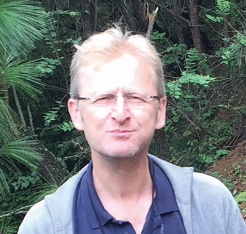 PROFESSOR PAUL WIGNALL
PROFESSOR PAUL WIGNALL
Professor of Palaeoenvironments, School of Earth and Environment, University of Leeds, UK
FIELDS OF RESEARCH: Geology, Palaeoenvironments
RESEARCH PROJECT: Investigating the Permo-Triassic extinction event, aiming to understand how organisms and environments recovered
FUNDERS: Natural Environment Research Council of the UK (NERC) and the National Natural Science Foundation of China (NSFC)
PALAEOBOTANY AND PALYNOLOGY
DR BARRY LOMAX
LECTURER IN ENVIRONMENTAL SCIENCE,
UNIVERSITY OF NOTTINGHAM, UK
Barry’s role on the ecoPT team involves the study of fossilised plants, in particular fossilised pollen and spores. “Plants produce large amounts of pollen and spores, and because of their small size and resilience, they can be found in very high numbers,” he says. “They are an ideal fossil to work with if you are interested in understanding past vegetation and how ecosystems responded to periods of dramatic environmental change.”
Barry carries out physical and chemical analyses of fossil pollen and spores – collectively known as sporomorphs – to see how their characteristics change at different points in geological time. “During mass extinction events, there is an increase in the abundance of deformed sporomorphs,” he explains. “We think that these deformations indicate that the parent plant was stressed. The challenge is to match types of environmental stress to the types of deformation we observe.”
Extracting such tiny fossils from rocks involves the use of acid, to dissolve the surrounding rock until only the fossils remain. The residue is then sieved to remove larger fragments, and the remaining sporomorphs are collected. “Sporomorphs are very small and extracting them can be very frustrating,” says Barry. “You need a great deal of perseverance and a steady hand to get your sample.” Once extracted, the sporomorphs are examined using a technique called Fourier transform infrared (FTIR) spectroscopy, which is used to give details of their underlying chemical structure.
Sporomorphs are coated in a hardy substance called sporopollenin, which acts as a natural ‘sunscreen’ to protect pollen grains from the harmful effects of UV, and also helps pollen be preserved in the fossil record. Infrared spectroscopy picks up this compound, telling researchers how much ‘sunscreen’ is present in the sporopollenin of a pollen grain. “In modern times, when human activities were causing the depletion of the ozone layer, we found that plants were producing more ‘sunscreen’ within their sporopollenin,” says Barry. The ecoPT team believe this effect likely stands true for ancient climates too – so, if they find fossil pollen with high amounts of these ‘sunscreen’ compounds, chances are they were produced in an ozone-depleted environment.
To expand on this research, Barry’s team are getting involved in a new project that will examine what environmental conditions lead to what deformations. The team will grow modern-day plants related to the ancient plants present during the P-T event and subject them to particular environmental stressors. They can then match any deformations to pollen that occurs with similar deformations in the fossil record, giving clues as to what ancient conditions led to the fossilised deformations.
Reference
https://doi.org/10.33424/FUTURUM243
BIODIVERSITY – the biological variety of an area, from the species to the ecosystem level
ECOLOGY – a branch of biology involving the study of how organisms interact with one another and their environment
ECOSYSTEM – a community of interacting organisms and the physical environment they live in
MASS EXTINCTION EVENT – a period when large numbers of species all over the world are lost much faster than they are replaced during a short period of geological time
PALAEOBIOLOGY – a branch of palaeontology, involving the study of fossil plants and animals
PALAEOBOTANY – a branch of palaeontology, involving the study of fossil plants
PALAEONTOLOGY – the study of prehistoric life
PALYNOLOGY – the study of pollen and spores, especially those in archaeological or geological deposits
PERMO-TRIASSIC EXTINCTION EVENT – also known as the P-T event, End-Permian Extinction or Great Dying. A mass extinction event that occurred around 252 million years ago, that took place from the end of the Permian period and beginning of the Triassic period
PERMIAN PERIOD – a period of geological time from 299 to 252 million years ago, characterised by the formation of the supercontinent Pangaea, the evolution of conifers and the diversification of reptiles
RESILIENCE – the ability of something – such as an ecosystem – to absorb or avoid damage and remain functional
SPOROMORPH – a fossil pollen grain or spore
TRIASSIC PERIOD – a period of geological time from 252 to 201 million years ago, characterised by continental rifts, an increase in diversity following the P-T event, and the appearance of the first dinosaurs and mammals
TRILOBITES – a once-abundant group of marine arthropods that are prevalent in the fossil record but declined before the Permian period and were completely wiped out by the P-T event
In its long and chequered history, the Earth has seen five major mass extinction events – events characterised by a widespread and rapid decrease in biodiversity across the planet. Every one of these has been marked by major changes to the global climate, which has, in turn, decimated ecosystems around the world, leaving relatively few species behind. These species, over time, evolve and diversify to suit the new climate – until the next extinction event comes along.
Though the meteorite impact that led to the extinction of most dinosaurs is the most famous of these events, there was an even more cataclysmic event almost 200 million years earlier, before dinosaurs were on the scene at all. This event marked the border between the Permian and Triassic geological periods, and is known as the Permo-Triassic extinction event, or P-T event for short. This was the largest extinction event of all time.
The ecoPT project involves 22 researchers from across the UK and China, who are collaborating to examine not only what caused the P-T event but also how different types of organism recovered and eventually diversified into many different species once again. “The post-extinction world was highly unusual, recovery in many habitats was extremely slow and it took several million years for the first signs of recovery to begin,” says Professor Paul Wignall, who leads the UK side of the project from the University of Leeds. “EcoPT aims to examine how communities began to recover and how ongoing environmental changes may have been involved.”
THE BEGINNINGS OF THE END
The Permian period teemed with life. In the ocean, trilobites, accompanied by many other marine invertebrates, had been abundant for millennia. On land, forests and swamps were home to a multitude of plants, fungi, insects and the relatively recently-diverged ancestors of reptiles and mammals. Global temperatures were relatively cool and the climate was stable, but this would not last.
Northern Russia contains a vast system of volcanic rock and old lava flows, many now buried or eroded, but estimated to have amounted to several million cubic kilometres when the eruptions that formed them took place. The presence of these rocks, known as the Siberian Traps, points to a series of massive eruption events at the end of the Permian period. “Each eruption likely lasted for a few years and emitted up to a few thousand cubic kilometres of lava,” says Paul. “For comparison, a big volcanic eruption today would average at about one cubic kilometre in volume.”
These eruptions had a profound effect on the global climate. They emitted vast quantities of carbon dioxide into the atmosphere, which led to global temperatures increasing significantly across several million years. “Annual ocean surface temperatures approached 40 oC – the warmest ocean waters today do not exceed 29 oC,” explains Paul. “This disrupted the circulation of ocean waters; oxygen-rich waters near the surface were not carried to the depths. This meant large areas of the ocean became severely oxygen-depleted.” On land, weather patterns became increasingly erratic, with periods of intense rainfall and floods followed by long droughts.
JOINING FORCES IN THE FIELD AND LAB
How these environmental changes affected life on Earth forms the crux of ecoPT’s research. The assembled team comprises researchers from many different fields who can combine their areas of expertise to build a more complete picture of what the world looked like 252 million years ago. “Geologists study rocks in the field, to understand the composition of ancient sediments,” says Paul. “Palaeontologists have the enjoyable task of carefully and systematically collecting fossils, with ancient pollen and spore fossils being especially useful for our work. Geochemists collect rock samples and decipher their chemical traits in the lab. And then, climate modellers use the sophisticated models that have been developed to make predictions about today’s climate and weather systems, and modify them to model ancient climates.”
Though the project entails a lot of lab and desk-based work, there have been valuable opportunities to collect samples in the field. “Fieldwork has been concentrated in China because there are many Permian and Triassic rocks in the country, and the road-building programme of recent years has led to the uncovering of new rock outcrops to study,” explains Paul. “In addition, rocks can also be collected in quarries, from outcrops on hillsides and along streams and rivers.” One area in south-west China has proved especially fruitful, containing a 100 km-long ‘transect’ that 252 million years ago began in a shallow sea, emerging into coastal swamps, and finishing among coastal plains and rivers. This area provides a useful comparison to examine what happened in different environments at the same point in geological history.
DETECTIVE WORK
EcoPT’s research has helped piece together the sequence of events that led to the P-T mass extinction. Prior research tended to focus on ancient seas, since their fossil records tend to be more complete and rocks easier to date, compared to land-based environments. Now, however, improved techniques are helping researchers consider all environments as part of the big picture. “The crisis can be seen to have started on land about 252 million years ago, as plants in coastal swamps began to rapidly die off,” says Paul. “Extinctions in the sea began tens of thousands of years later – a short period of time for a geologist!” As swamps dried out, wildfires became more prevalent, noticeable through an abundance of charcoal in the fossil record.
Eruptions from the Siberian Traps reached their peak as ocean life began to die off. We know this because sediments show a sudden increase in mercury levels, a heavy metal often present in vapour from eruptions. “As well as providing a tell-tale marker of eruptions in the geological record, mercury is also very poisonous to most life,” says Paul. Of the relatively few plant species left on land after the initial extinction phase, many had deformities in their pollen that show up in the fossil record. It is theorised that mercury poisoning could cause these deformities, though it is possible that other environmental changes, such as ozone depletion, were responsible.
“There is still a lot we don’t know about how eruptions in Siberia could kill off almost all life on the planet,” says Paul. “This isn’t surprising, given there are still big gaps in our understanding of the modern climate – how exactly clouds form, for example.” Atmospheric scientists are working on filling these knowledge gaps, and their findings will improve understanding of ancient climates, as well as the current one. For geologists, there are always more rocks to analyse, to build a deeper and more precise understanding of what happened all those millions of years ago.
 PROFESSOR PAUL WIGNALL
PROFESSOR PAUL WIGNALL
Professor of Palaeoenvironments, School of Earth and Environment, University of Leeds, UK
FIELDS OF RESEARCH: Geology, Palaeoenvironments
RESEARCH PROJECT: Investigating the Permo-Triassic extinction event, aiming to understand how organisms and environments recovered
FUNDERS: Natural Environment Research Council of the UK (NERC) and the National Natural Science Foundation of China (NSFC)
PALAEOBOTANY AND PALYNOLOGY
DR BARRY LOMAX
LECTURER IN ENVIRONMENTAL SCIENCE,
UNIVERSITY OF NOTTINGHAM, UK
Barry’s role on the ecoPT team involves the study of fossilised plants, in particular fossilised pollen and spores. “Plants produce large amounts of pollen and spores, and because of their small size and resilience, they can be found in very high numbers,” he says. “They are an ideal fossil to work with if you are interested in understanding past vegetation and how ecosystems responded to periods of dramatic environmental change.”
Barry carries out physical and chemical analyses of fossil pollen and spores – collectively known as sporomorphs – to see how their characteristics change at different points in geological time. “During mass extinction events, there is an increase in the abundance of deformed sporomorphs,” he explains. “We think that these deformations indicate that the parent plant was stressed. The challenge is to match types of environmental stress to the types of deformation we observe.”
Extracting such tiny fossils from rocks involves the use of acid, to dissolve the surrounding rock until only the fossils remain. The residue is then sieved to remove larger fragments, and the remaining sporomorphs are collected. “Sporomorphs are very small and extracting them can be very frustrating,” says Barry. “You need a great deal of perseverance and a steady hand to get your sample.” Once extracted, the sporomorphs are examined using a technique called Fourier transform infrared (FTIR) spectroscopy, which is used to give details of their underlying chemical structure.
Sporomorphs are coated in a hardy substance called sporopollenin, which acts as a natural ‘sunscreen’ to protect pollen grains from the harmful effects of UV, and also helps pollen be preserved in the fossil record. Infrared spectroscopy picks up this compound, telling researchers how much ‘sunscreen’ is present in the sporopollenin of a pollen grain. “In modern times, when human activities were causing the depletion of the ozone layer, we found that plants were producing more ‘sunscreen’ within their sporopollenin,” says Barry. The ecoPT team believe this effect likely stands true for ancient climates too – so, if they find fossil pollen with high amounts of these ‘sunscreen’ compounds, chances are they were produced in an ozone-depleted environment.
To expand on this research, Barry’s team are getting involved in a new project that will examine what environmental conditions lead to what deformations. The team will grow modern-day plants related to the ancient plants present during the P-T event and subject them to particular environmental stressors. They can then match any deformations to pollen that occurs with similar deformations in the fossil record, giving clues as to what ancient conditions led to the fossilised deformations.
PALAEOBIOLOGY AND ECOLOGY
DR ALEX DUNHILL
LECTURER IN PALAEOBIOLOGY
UNIVERSITY OF LEEDS, UK
Alex is interested in examining how past ecosystems, and the species within them, responded to extinction events. “Traditionally, palaeobiologists have focused on the number of species that went extinct during these mass extinction events,” he explains. “More recently, however, attention has turned to how these extinction events affected ecosystem function and structure.” “The majority of my research relies on giant global databases,” says Alex. “We study many different types of organism, from hard-shelled molluscs in the oceans to vertebrates on the land.” Alex uses these databases to look at how diversity changes over time for different groups, and whether there could be links between these changes.
“At the species level, we tend to think about an organism’s ability to be resilient to environmental changes, usually through generalist characteristics that allow it to adapt,” says Alex. “We can also look for resilience at the ecosystem level.” Ecosystems involve every organism in an area, and how they interact with one another, so the extinction of a species will change these interactions. If the ecosystem has low resilience, a significant environmental change can lead to a cascade of extinctions, even if it only directly affects a few species. A more resilient ecosystem will be able to absorb these changes and become stable again.
Working out a modern-day ecosystem’s resilience can be tricky enough, so deciphering that of an ancient ecosystem is very challenging. “We use a range of techniques, from modelling past climates and relating that to diversity patterns and extinction rates in the fossil record, to modelling communities of interacting organisms based on food webs,” says Alex.
The team’s work has yielded some intriguing results. “Today, biodiversity is highest in the tropical regions around the equator, and decreases towards the poles,” says Alex. “However, the super greenhouse world of the early Triassic, which followed the P-T event, shows greatest diversity in temperate regions. This is likely because equatorial temperatures were too hot for most animal life.”
There are some unsettling similarities between the P-T event and the climate change that we are experiencing today. Both involve a global temperature increase due to high volumes of carbon dioxide in the atmosphere. “The fossil record provides the only direct evidence of climatic changes and extinction events on the level of severity that we might expect,” says Alex. “Whilst we hopefully won’t experience a mass extinction on the scale of the Permo-Triassic, studying past extinctions caused by rapid warming can help us understand what parts of the biosphere are likely to be most under threat in the future.” For instance, it is very plausible that tropical regions will see a decrease in biodiversity as temperatures become too warm to sustain some species.
Alex’s future work will focus on understanding the role of ecosystem resilience in the P-T event, to understand exactly how ecosystems collapsed. “Was species extinction primarily in response to environmental pressures or did the removal of a few ‘keystone species’ lead to the collapse of communities via secondary extinction cascades?” he asks.
EXPLORE A CAREER IN GEOLOGY
• Besides academia, geologists are employed in a whole range of industries, including environmental consultancy, civil engineering, mining and the oil industry. Renewable energy and other emerging industries also frequently require geological expertise.
• In the UK, the Geological Society has a very broad array of outreach and educational activities. These include information on career pathways, opportunities for field trips and junior memberships.
• The Palaeontological Association has numerous outreach events, including ‘fossil festivals’ held in several sites in the UK. Alex mentions there are also countless ‘amateur’ palaeontologists who are active in research and have contributed to important discoveries.
Paul says that geology draws on all core sciences, so all scientific subjects are relevant. Mathematics and physical geography are also useful within geology.
Palaeontology takes a similar broad scientific base, meaning there are many different scientific routes to a career in the subject. Barry notes that he studied geology at undergraduate level, yet now works in a biosciences department.
MEET PAUL

WHAT WERE YOUR INTERESTS GROWING UP?
I liked playing outdoors and was interested in the natural world – everything from butterflies to rocks. I was also lucky to grow up on the coast and so could spend summer days looking in rock pools.
WHAT INSPIRED YOU TO BECOME A SCIENTIST?
Collecting fossils first got me interested in geology, together with a couple of fantastic books I read: Derek Ager’s ‘The Nature of the Stratigraphic Record’ and Adrian Desmond’s brilliant ‘The Hot-blooded Dinosaurs’. They opened my eyes to deep time and how we attempt to understand it. Most of all, I became aware that science isn’t hard facts at all, but a series of fascinating debates.
WHAT HAS BEEN A EUREKA MOMENT IN YOUR CAREER?
I did my PhD in the late 1980s on a Jurassic rock called the Kimmeridge Clay, the source of most North Sea oil, which formed in deep, oxygen-poor seas around the UK. I realised that similar oxygen-poor conditions occurred during the P-T event all over the world. It’s not surprising that most marine life died. It took quite a few years, and a lot of fieldwork, to prove this though!
WHAT MOTIVATES YOU TO DO THE WORK YOU DO?
There is nothing more interesting than trying to understand what caused the greatest catastrophe in our planet’s history!
WHAT ISSUES WILL FACE THE NEXT GENERATION OF GEOLOGISTS?
Anything that involves digging in the ground or understanding what’s happening beneath our feet requires geologists. The push for a battery-powered economy will create huge demand for metals such as lithium, which geologists will need to find. Geologists also aim to understand Earth’s history and how our planet works, which is key to understanding and responding to climate change.
MEET ALEX

WHAT WERE YOUR INTERESTS GROWING UP?
I was fascinated by dinosaurs and the natural world in general from an early age. Even as a four-year-old, I would have said I wanted to be a palaeontologist when I grew up. Despite many changes of heart along the way, I’ve never really lost that passion for the natural world and fascination for evolution and the vastness of geological time.
WHAT INSPIRED YOU TO BECOME A SCIENTIST?
Though I’ve always wanted to do something science-orientated, whilst at school I never really had the aim to become a professional scientist. It was only in my final year of studying an environmental science degree, whilst undertaking my final-year research project on dinosaur footprints, that I was inspired to embark upon a career in research. I suppose that rekindled my passion for the prehistoric world that had been slow-burning since I was a toddler.
HOW HAS YOUR CAREER LED YOU TO WHERE YOU ARE TODAY?
During my PhD, I became fascinated by periods of biodiversity crashes, which motivated me to pursue mass extinction research. This led to many successful projects on the geography, selectivity and causes of these catastrophes. I’ve recently gravitated towards multidisciplinary research, collaborating with modern ecologists, mathematicians and even social scientists. I’ve realised that to understand big concepts, you need to focus beyond your narrow area of expertise!
WHAT MOTIVATES YOU TO DO THE WORK YOU DO?
First and foremost, the amazing people I work with, whether that be my incredible research students or my collaborators across disciplines. I enjoy learning about other people’s areas of expertise and how they can link with mine to answer complex questions I could never answer alone.
WHAT ISSUES WILL FACE THE NEXT GENERATION OF PALAEOBIOLOGISTS?
I hope the field will continue to increase in relevance and move away from the caricature of stuffy old men looking at dusty fossils. I firmly believe the distant past can inform us about the present and future, helping society to make better decisions.
MEET BARRY

WHAT WERE YOUR INTERESTS WHEN YOU WERE GROWING UP?
I had a real love of natural history and being outside. I was often to be found messing around in woods, playing in the mud and hitting rocks with a hammer. The tools of exploration I use now have changed but the curiosity has remained.
WHO OR WHAT INSPIRED YOU TO BECOME A SCIENTIST?
Though I loved the natural world, I hadn’t really connected that interest with school or what I wanted to do when I grew up. That changed when I took an A-level in geology taught by a brilliant teacher (thank you, Mr Bellamy). We went away on field trips to different parts of the UK and he’d explain how you could read the rock record to tell you about past environments. Being outside, talking about the natural world, motivated me to take a geology degree. In my final year, I did a research project on fossils and palaeoenvironmental reconstructions and enjoyed it so much that it led to my PhD. After many years of being a research assistant, I got my lectureship at Nottingham.
WHAT HAVE BEEN THE EUREKA MOMENTS IN YOUR CAREER? HOW HAS YOUR CAREER LED YOU TO THIS CURRENT RESEARCH?
My Eureka moment was showing that the chemistry of plant spores had changed in response to human induced ozone depletion. As a child, I’d grown up hearing about the Antarctic ozone hole, and being able to detect the impact of this event was amazing. This finding has underpinned the last 15 years of my career and directly led to me working on the eco PT project
WHAT MOTIVATES YOU TO DO THE WORK YOU DO?
I want to try and understand how the natural world works, how the different parts of the system fit together and interact, and explore what happens when the system begins to break down.
WHAT OPPORTUNITIES WILL FACE THE NEXT GENERATION OF PALAEOBOTANISTS?
The joy of working with plants is that you can easily link the world of fossils to the present day. Many plants alive today have long fossil records, so we can use these plants to learn about a world that existed 100s of millions of years ago. Fossil plants are a great way to unpick past climates and that data can be used to help inform us about the challenges we will face in the future.
THE TEAM’S TOP TIPS
01 Be keen, motivated and curious about the natural world.
02 Follow your interests. If you have your heart set on a particular career, research what it entails and what the requirements are to get there.
03 Never be afraid to ask lots of questions. There’s no such thing as a stupid question, after all!
Do you have a question for Paul, Barry or Alex?
Write it in the comments box below and Paul, Barry or Alex will get back to you. (Remember, researchers are very busy people, so you may have to wait a few days.)

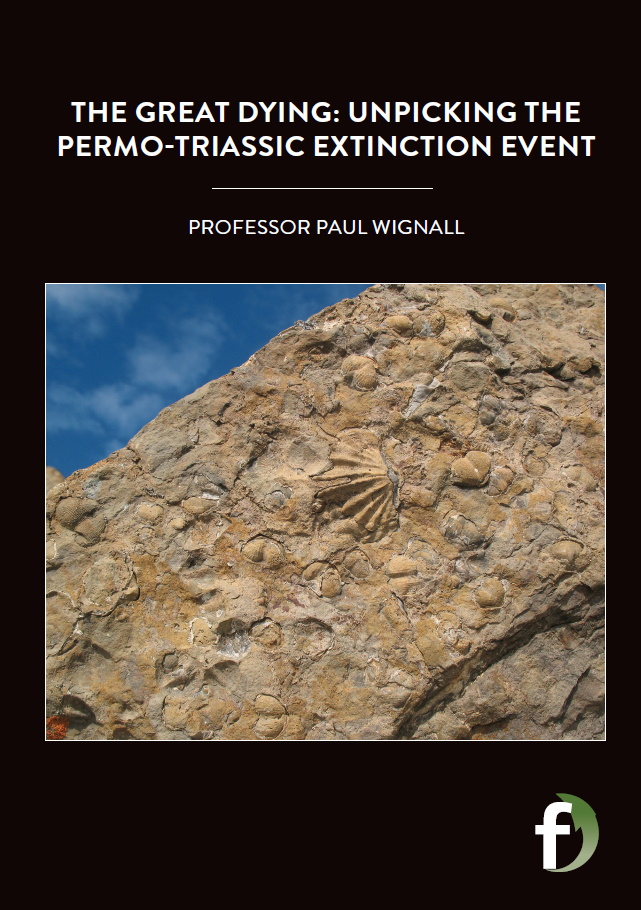
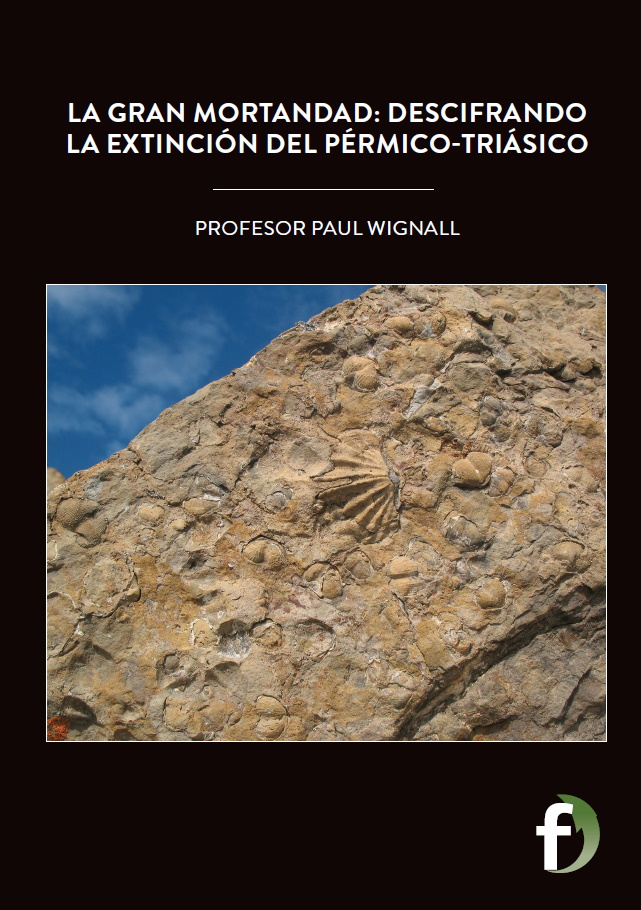
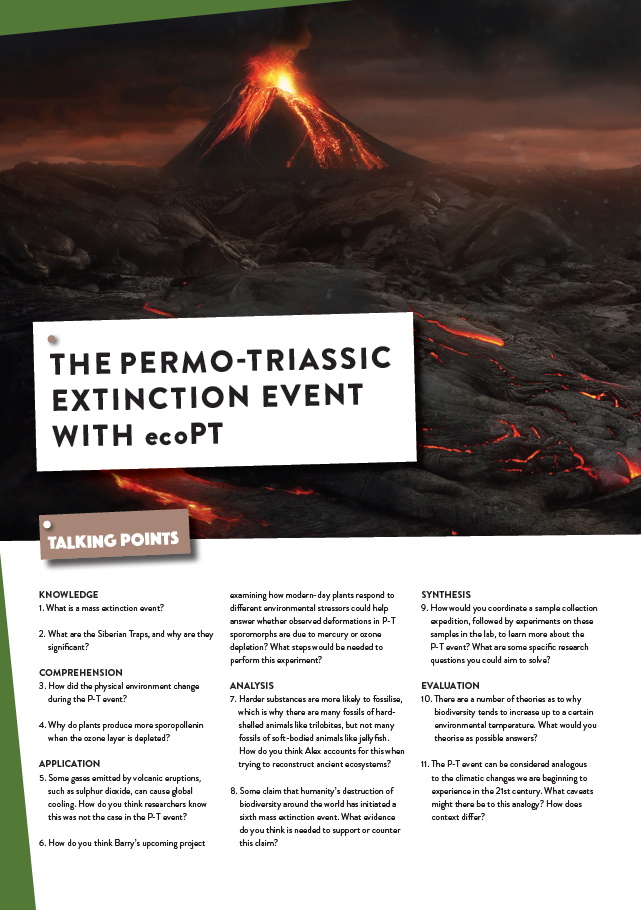


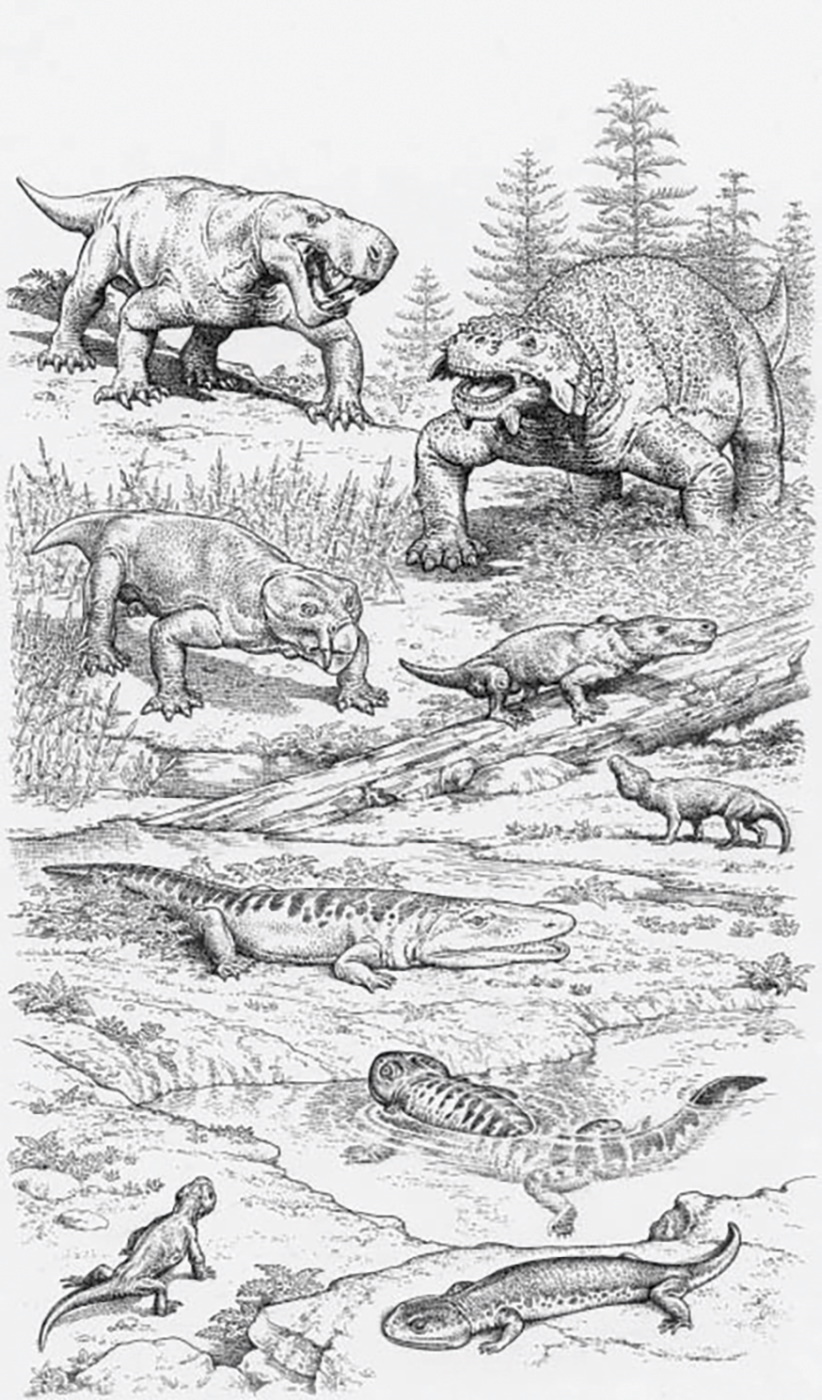
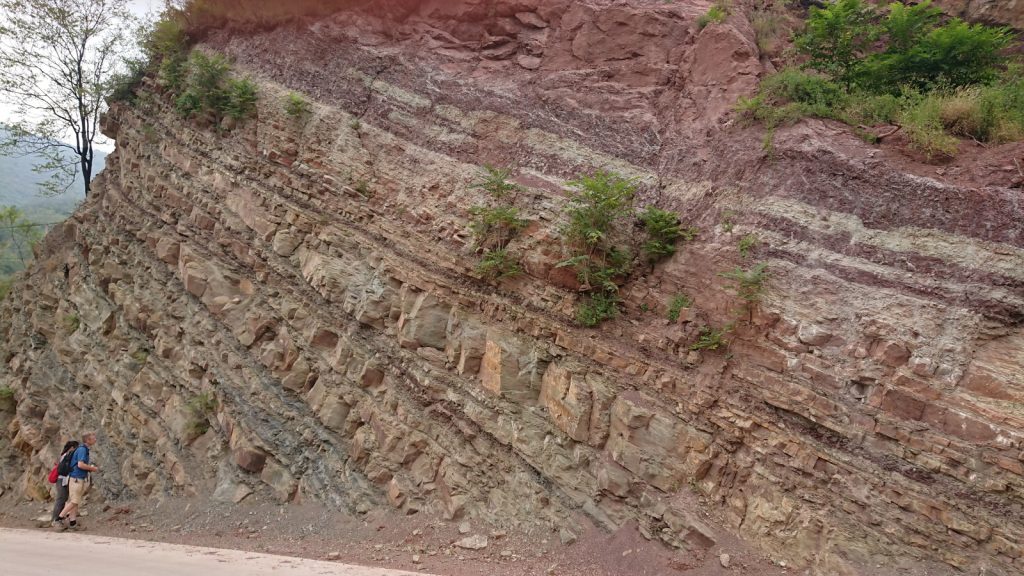
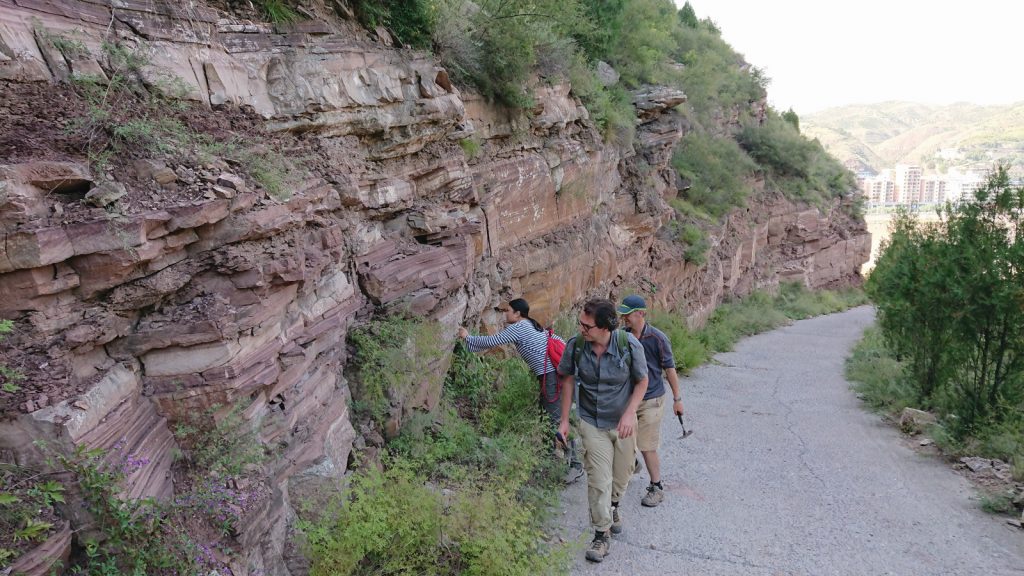
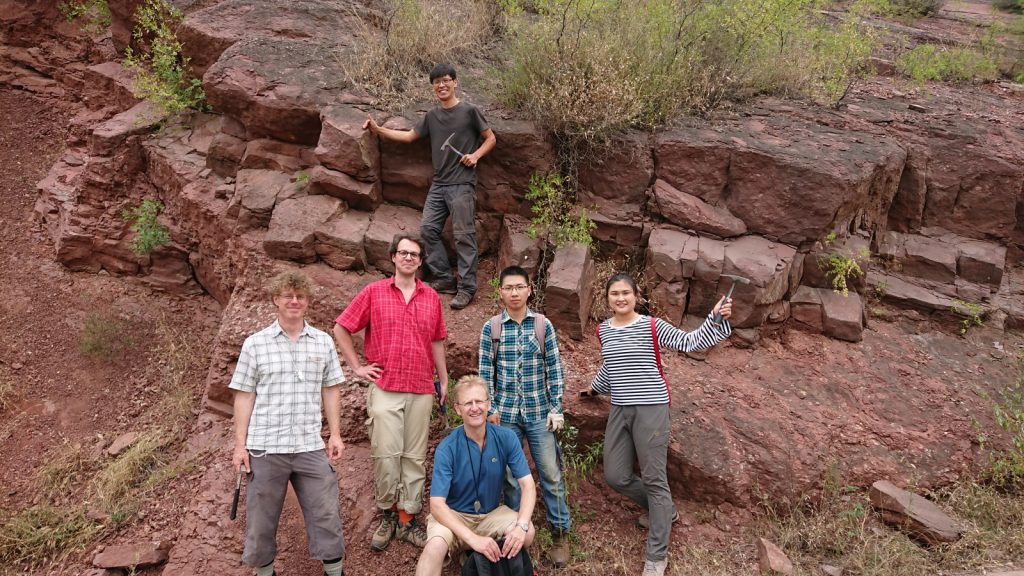
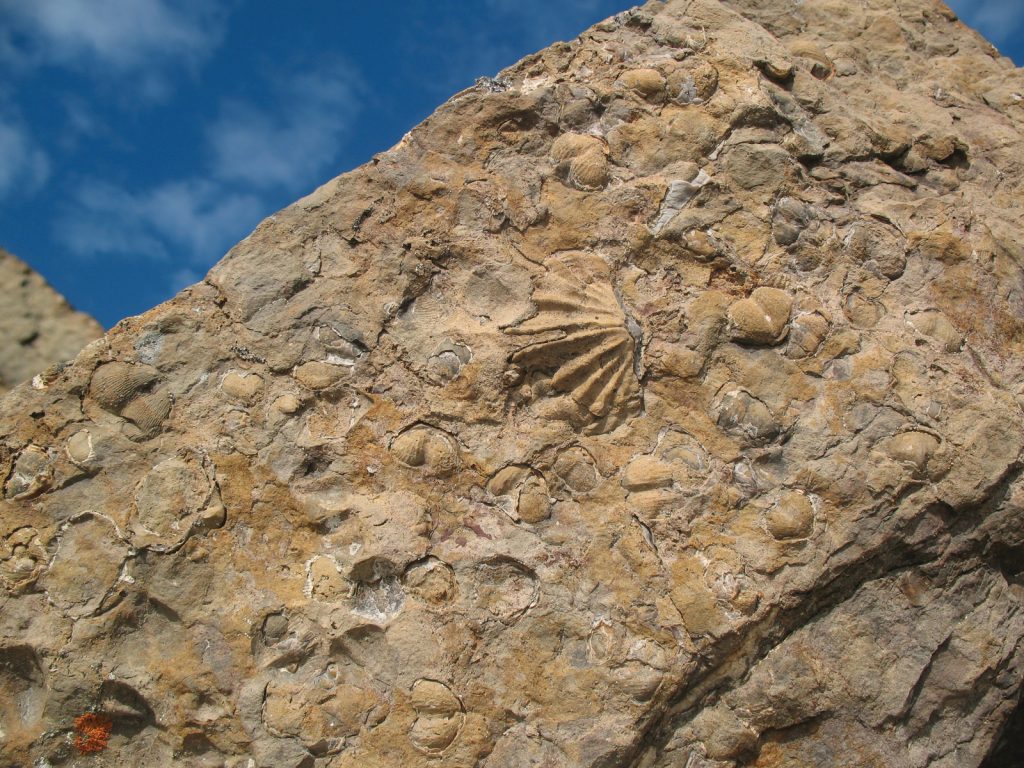
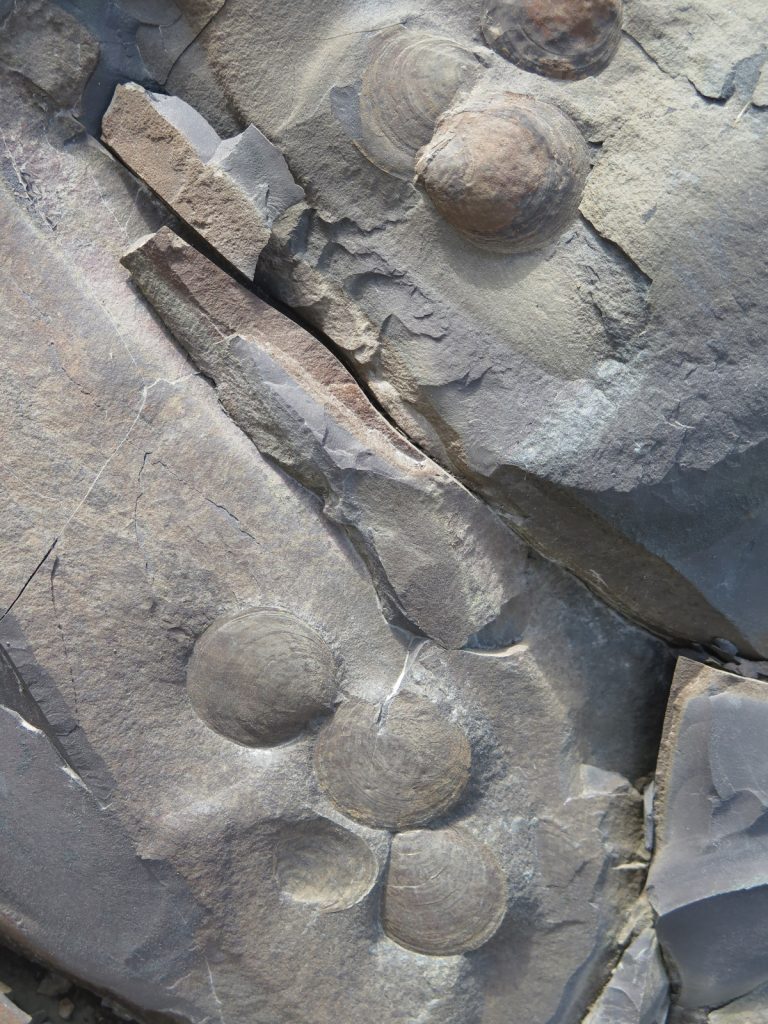
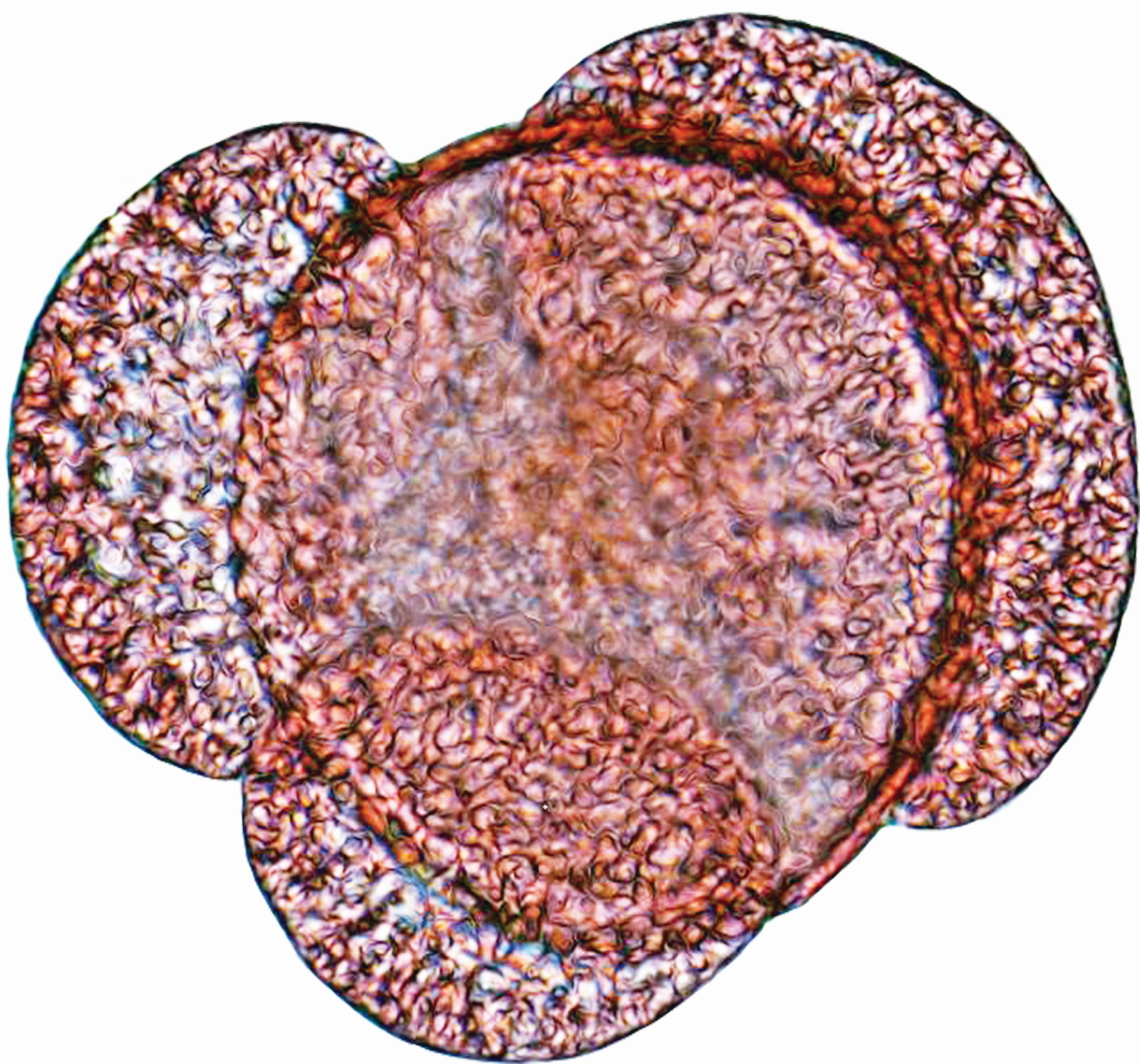



Hey! I would like to know who is the autor of the article? Thanks 🙂
Hi,
Thank you for your interest in this article. It is produced as a collaboration between Professor Paul Wignall and the Futurum editorial team. Let us know if you have a specific question for Professor Wignall or the editorial team.
Best wishes,
Futurum